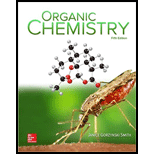
Concept explainers
(a)
Interpretation: The IUPAC name for the given compound is to be stated.
Concept introduction: International Union of Pure and Applied Chemistry gave guidelines to write the chemical name of molecules. One should follow the given three steps to derive the structure of the compound from its IUPAC name. The first step involves the identification of the parent name and the functional group found at the end of the name. The second step is numbering of carbon skeleton in either direction. The third step is the addition of substituents at appropriate carbon atoms.
(b)
Interpretation: The IUPAC name for the given compound is to be stated.
Concept introduction: International Union of Pure and Applied Chemistry gave guidelines to write the chemical name of molecules. One should follow the given three steps to derive the structure of the compound from its IUPAC name. The first step involves the identification of the parent name and the functional group found at the end of the name. The second step is numbering of carbon skeleton in either direction. The third step is the addition of substituents at appropriate carbon atoms.
Want to see the full answer?
Check out a sample textbook solution
Chapter 19 Solutions
Package: Organic Chemistry with Connect 2-year Access Card
- When the conjugate acid of aniline, C6H5NH3+, reacts with the acetate ion, the following reaction takes place: C6H5NH3+(aq)+CH3COO(aq)C6H5NH2(aq)+CH3COOH(aq) If Kafor C6H5NH3+ is 1.35105 and Kafor CH3COOH is 1.86105 , what is K for the reaction?arrow_forwardWhat happens when (i) Chlorobenzene is treated with Cl2/FeCl3 (ii) ethyl chloride is treated with AgN02, (iii) 2-bromopentane is treated with alcoholic KOH? Write the chemical equations in support of your answer.arrow_forwardFunctional group contained in compound CH3-CH2-C-O-CH3 || O A. Amine B. Ester c. Amide d. Thiol e. Carboxylic acidarrow_forward
- What happens when (i) chlorobenzene is treated with Cl2/FeCl3,(ii) ethyl chloride is treated with AgNO2, and(iii) 2-bromopentane is treated with alcoholic KOH?arrow_forwardWrite reactions of Propene with the following reagents: A) HCl. B) KMnO4/H2O/ 20 °C; C) H2O/H+arrow_forwardA compound with formula C7H12O is treated with sodium borohydride in methanol to yield 2,2-dimethylcylopentanol. Write a reaction scheme showing the structures of the reactant, the reagents, and the product. Will the product be optically active? Explain.arrow_forward
- Reaction of butane (CH 3CH 2CH 2CH 3) with Cl 2 in the presence of light forms two different alkyl chlorides that have molecular formula C 4H 9Cl. Draw the structures of both alkyl chlorides.arrow_forwardThe sex attractant of the female tiger moth is an alkane of molecular formula C 18H 38. Is this molecule an acyclic alkane or a cycloalkane?arrow_forwardDraw the expanded structural formula for a carboxylic acid that has the formula C5H10O2C5H10O2, with two methyl substituents.arrow_forward

 Chemistry & Chemical ReactivityChemistryISBN:9781337399074Author:John C. Kotz, Paul M. Treichel, John Townsend, David TreichelPublisher:Cengage Learning
Chemistry & Chemical ReactivityChemistryISBN:9781337399074Author:John C. Kotz, Paul M. Treichel, John Townsend, David TreichelPublisher:Cengage Learning Chemistry & Chemical ReactivityChemistryISBN:9781133949640Author:John C. Kotz, Paul M. Treichel, John Townsend, David TreichelPublisher:Cengage Learning
Chemistry & Chemical ReactivityChemistryISBN:9781133949640Author:John C. Kotz, Paul M. Treichel, John Townsend, David TreichelPublisher:Cengage Learning Chemistry: Principles and ReactionsChemistryISBN:9781305079373Author:William L. Masterton, Cecile N. HurleyPublisher:Cengage Learning
Chemistry: Principles and ReactionsChemistryISBN:9781305079373Author:William L. Masterton, Cecile N. HurleyPublisher:Cengage Learning Chemistry: Principles and PracticeChemistryISBN:9780534420123Author:Daniel L. Reger, Scott R. Goode, David W. Ball, Edward MercerPublisher:Cengage Learning
Chemistry: Principles and PracticeChemistryISBN:9780534420123Author:Daniel L. Reger, Scott R. Goode, David W. Ball, Edward MercerPublisher:Cengage Learning Chemistry: The Molecular ScienceChemistryISBN:9781285199047Author:John W. Moore, Conrad L. StanitskiPublisher:Cengage Learning
Chemistry: The Molecular ScienceChemistryISBN:9781285199047Author:John W. Moore, Conrad L. StanitskiPublisher:Cengage Learning





